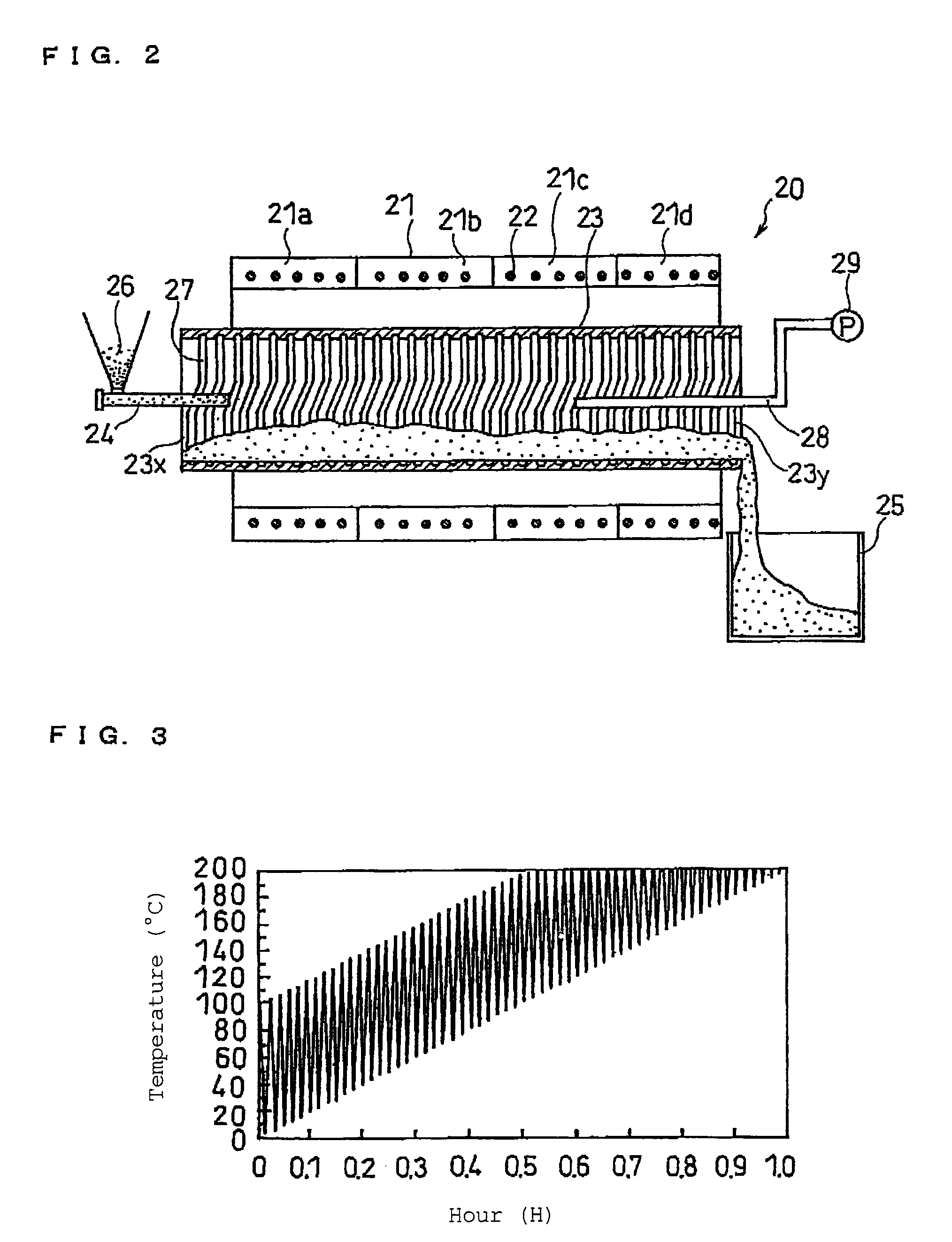Method for producing lithium-containing transition metal oxide
a transition metal oxide and lithium-containing technology, applied in the direction of manganates/permanentates, nickel compounds, cell components, etc., can solve the problems of linio/sub>2 /sub>deterioration, high cost of co,
- Summary
- Abstract
- Description
- Claims
- Application Information
AI Technical Summary
Benefits of technology
Problems solved by technology
Method used
Image
Examples
example 1
(a) Synthesis of a Lithium-Containing Transition Metal Oxide
Step (i)
[0069]An aqueous solution of nickel sulfate, an aqueous solution of manganese sulfate, and an aqueous solution of cobalt sulfate, having a concentration of 1.2 mol / L, were prepared. These aqueous solutions were introduced into a reaction vessel having an internal volume of 5 L while their amounts were adjusted so that the molar ratio was Ni:Mn:Co=3:1:1. The introduction rate of the total of these aqueous solutions was set to 1.5 ml / min. Simultaneously with this, an aqueous solution of 4.8 mol / L NaOH was introduced into the reaction vessel at an introduction rate of 0.75 ml / min. Argon gas was bubbled in the aqueous solution in the reaction vessel to expel dissolved oxygen. In this way, a coprecipitation reaction was carried out. Also, as illustrated in FIG. 1, the aqueous solution was caused to flow from the bottom of the reaction vessel upward, so that the mixed solution was caused to collide with crystalline nuclei...
PUM
| Property | Measurement | Unit |
|---|---|---|
| mean particle size | aaaaa | aaaaa |
| temperature | aaaaa | aaaaa |
| temperature | aaaaa | aaaaa |
Abstract
Description
Claims
Application Information
 Login to View More
Login to View More - R&D
- Intellectual Property
- Life Sciences
- Materials
- Tech Scout
- Unparalleled Data Quality
- Higher Quality Content
- 60% Fewer Hallucinations
Browse by: Latest US Patents, China's latest patents, Technical Efficacy Thesaurus, Application Domain, Technology Topic, Popular Technical Reports.
© 2025 PatSnap. All rights reserved.Legal|Privacy policy|Modern Slavery Act Transparency Statement|Sitemap|About US| Contact US: help@patsnap.com


